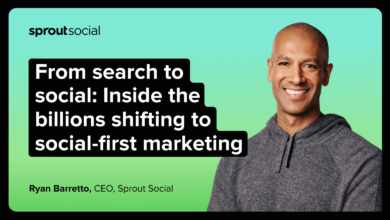Creator Marketing: The Ultimate Strategy for Every Business

▼ Summary
– The term “influencer” applies broadly to anyone who can prompt an audience to take action, regardless of follower count.
– Everyone is a creator in today’s digital age, and even niche creators can build trust and convert audiences into customers.
– Influencer marketing is effective due to social proof and authenticity, similar to word-of-mouth recommendations.
– Brands should start small with creator campaigns, set clear goals and metrics, and gradually build a diverse creator portfolio.
– Measuring influencer success should go beyond last-click attribution to include awareness, engagement, and other holistic metrics.
For businesses of every size, creator marketing has become an essential strategy for building authentic connections with modern audiences. Moving beyond outdated notions of what an influencer looks like, this approach centers on partnering with individuals who genuinely resonate with your brand, regardless of their follower count.
The term “influencer” often carries unnecessary baggage. In reality, it simply describes anyone capable of motivating their audience to take action. Whether it’s a neighborhood food lover with a few hundred followers praising your restaurant’s signature dish, or a viral TikTok personality reaching millions, effective creator collaborations drive meaningful engagement.
Lindsey Gamble, a respected consultant in the creator economy, emphasizes that everyone is a creator in today’s digital landscape. Posting on social platforms about topics you care about makes you a content creator. When others connect with that content, communities form. Even within small or highly specific niches, these connections foster trust, a powerful catalyst for turning audience members into customers.
Gamble points to a compelling example from his own experience: a CPAP company achieved double-digit returns by partnering with a creator focused on sleep apnea. This underscores a vital insight, success doesn’t require massive followings, just authentic belief in your brand.
The effectiveness of creator marketing stems from the power of an external voice. People trust recommendations from others far more than branded messages. This form of social proof only works when it feels genuine. Gamble advises against treating creators like “digital billboards.” Instead, he suggests identifying your marketing challenges, such as difficulty reaching a certain demographic, and collaborating with creators to develop fresh, original content that addresses those needs.
Not every business can afford to work with top-tier creators right away, and that’s perfectly fine. Starting small and scaling up is a practical and effective approach. Run a few initial campaigns focused on brand awareness. Provide clear creative briefs, measure performance against your goals, and use those insights to refine future efforts. Over time, this builds a roadmap for engaging a diverse range of creators who can help you connect with various audiences.
One common mistake in evaluating creator campaigns is relying too heavily on last-click attribution. While promo codes and tracked links help measure direct sales, they don’t capture the full impact. Creators contribute significantly to brand awareness, audience growth, and long-term loyalty. A more complete evaluation should include metrics like content engagement, website traffic, search volume increases, and post-campaign surveys.
Looking ahead, marketers are encouraged to move beyond narrow measurement practices and explore the broader influence of creator partnerships. By embracing creativity in both collaboration and analysis, brands can unlock deeper, more sustainable growth through authentic human connection.
(Source: HubSpot)


